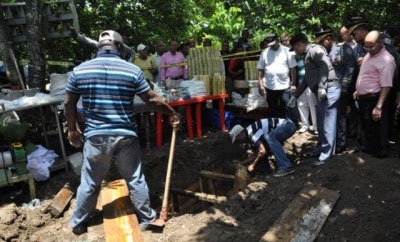Authorities in the Dominican Republic have discovered a drug lab described as the largest ever found in the Caribbean, supporting suggestions that the Caribbean is increasing in importance again for drug traffickers responding to anti-drug efforts in Central America.
Police uncovered the underground cocaine laboratory, including 230 kilograms of cocaine, on the grounds of an upmarket property in the country’s southern San Cristobal municipality, reported El Nuevo Diario.
The property was owned by two Colombians, John Jairo Roldan Estrada and Angel Fernandez Vargas, arrested and imprisoned last week following an initial raid by Dominican authorities, which had identified the men following an investigation into micro-trafficking on the island, reported El Nacional.
While the Dominican Republic’s status as a major transshipment point saw the DEA to previously describe it as a “warehouse” for US-bound drugs, as El Nuevo Diario highlights, this is the first time a foreign criminal group has been discovered processing drugs in the country.
InSight Crime Analysis
The uncovering of a major drug production lab in the Dominican Republic is momentous, but not surprising. As repeatedly stated by Assistant Secretary of State William Brownfield, the Caribbean is becoming an increasingly important location in international drug trafficking, as anti-narcotics efforts in other countries have led to the migration of criminal activity. There are various reasons why the Dominican Republic would make an appealing location for Colombians to set up a major drugs lab.
Firstly, precursor chemicals are easier to get hold of, following the crackdown on said chemicals in Colombia as highlighted by the State Department in its 2013 International Narcotics Control Strategy Report. Secondly, sending the raw material to be processed elsewhere ensures smaller losses should shipments be intercepted – cocaine base is worth less than the finished product. Finally, the island suffers from corruption and inefficiency in both law enforcement and its judiciary.
The discovery in recent years of drug processing labs in Central America has also highlighted the migration of drug production into new regions.

